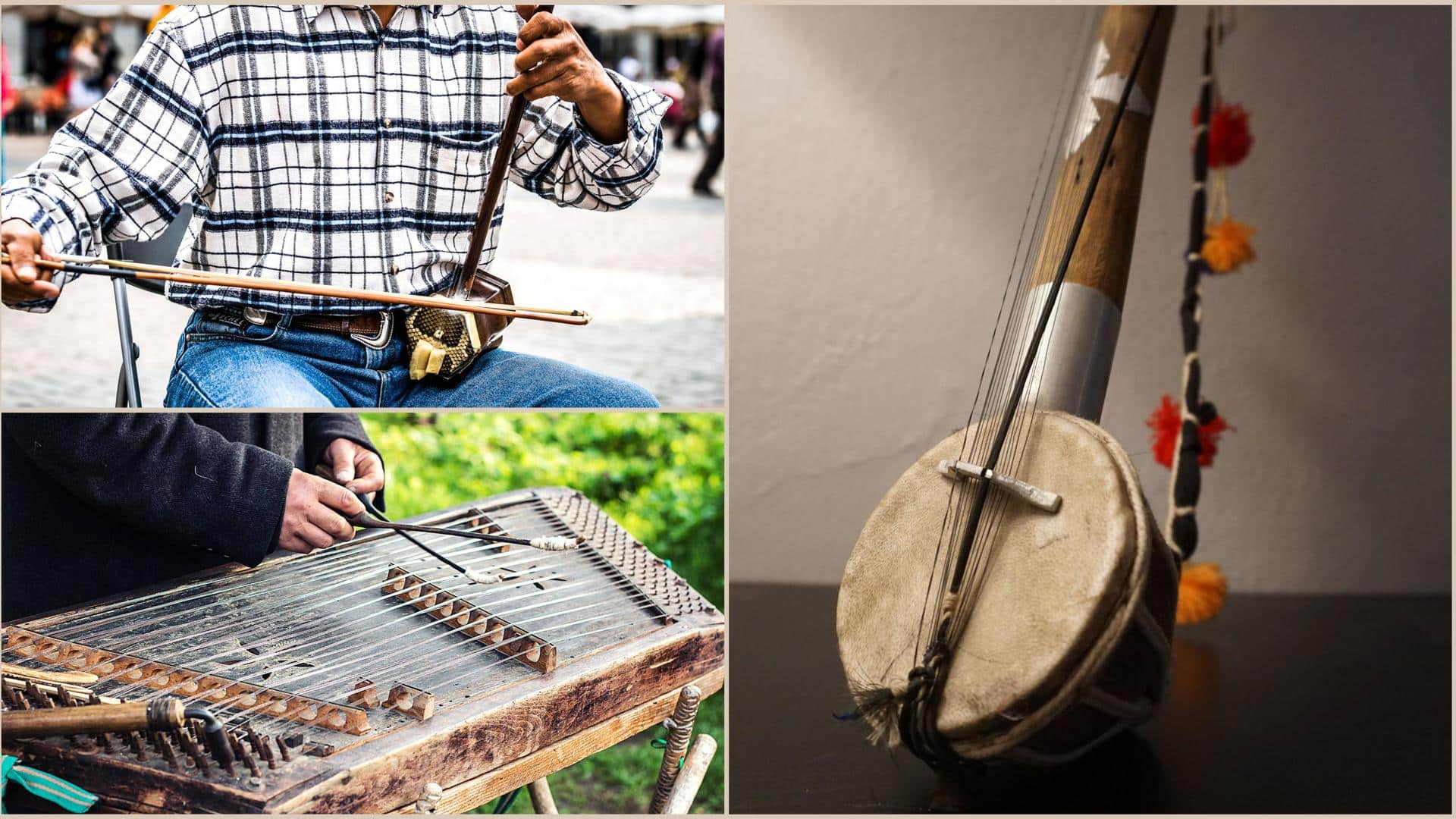
Rare and lesser-known musical instruments from around the world
What's the story
On World Music Day, let us explore the fascinating world of musical instruments. While some instruments are widely recognized, others remain hidden and undiscovered. Each instrument plays a special role in creating beautiful music. Join us in celebrating the unique sounds and contributions of these rare and lesser-known musical instruments and celebrate the diversity of sounds on this special day.
Vietnam
The Ðàn Tre
A Vietnamese refugee named Minh Tam Nguyen made Ðàn Tre to express his creativity while he was in a labor camp during the Vietnam War. This instrument combines European and Asian music traditions and is made from things he found in the camp: a bamboo tube, a large tin of olive oil for sound, and 23 strings from a United States Army telephone cable.
Rajasthan
Ravanahatha
The Ravanahatha, a bowed string instrument, is believed to have originated among the Hela community in Sri Lanka during King Ravana's reign. It features a coconut shell bowl covered with goat hide, a bamboo stick, and two main strings, one made of steel and the other of horsehair. It is still played in parts of Rajasthan and holds a significant place in folk music.
China
Erhu
The Erhu, a small Chinese bowed string instrument with Mongolian origins, has a history dating back thousands of years. It consists of a stick-like wooden neck and a small wooden resonance chamber covered in python skin. Two silk strings, tensioned by tuning pegs, run along the instrument. When played, the erhu produces a mystical sound reminiscent of a violin.
Hungary
Cimbalom
The Cimbalom is a unique and ancient instrument dating back to Hungary in the Middle Ages. It features as many as 125 strings spanning the length of a wooden box supported by four legs. To play it, musicians strike the strings with mallets. The cimbalom's sound is a mashup of piano and harp, which is incredibly soothing to the ear.
Harmonica
Glass harmonica
The Glass harmonica, invented in 1761 by Benjamin Franklin, consists of glass bowls of different sizes, filled with varying amounts of liquid. The bowls are nested together on a revolving spindle. Instead of using fingertips, the player runs their fingers on the bowls' rims, creating a melodic and chordal sound. Even today, this instrument is cherished by those who enjoy fascinating and unique sounds.